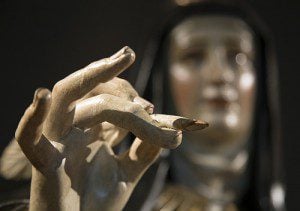“Does religion make people good or bad?” Jonathan Haidt raises this question mid-way into his book, The Righteous Mind: Why Good People are Divided by Religion and Politics.
With a nod to the debate between atheists and believers over whether religion does more harm than good for society, Haidt goes on to stake his claim.
He points to studies by social psychologists that evidence higher levels of altrusim, in particular charitable giving, and higher levels of trust among and for religious people. These high scores are not always  unconditional: that is, sometimes religious people’s altruism is increased when the object of charity is those in their “in-group.” But even when this is the case, there is still generally a higher level evidenced by the religious.
unconditional: that is, sometimes religious people’s altruism is increased when the object of charity is those in their “in-group.” But even when this is the case, there is still generally a higher level evidenced by the religious.
Haidt then references the important (but seemingly often neglected) study by Robert Putnam, published in the book American Grace. This is how Haidt explains the relevant segment:
Common sense would tell you that the more time and money people give to their religious groups, the less they have left over for everything else. But common sense turns out to be wrong. Putnam and Campbell found that the more frequently people attend religious services, the more generous and charitable they become across the board. Of course religious people give a lot to religious charities, but they also give as much as or more than secular folk to secular charities such as the American Cancer Society. They spend a lot of time in service to their churches and synagogues, but they also spend more time than secular folk serving in neighborhood and civic associations of all sorts (310).
As Haidt points out, this study concluded that the most important predictor for “good neighborliness” (shorthand for altruism, social and civic responsibility, etc.) was not religious or theological belief, but rather, “how enmeshed people were in relationships with their co-religionists.” In other words, the biggest predictor was relational connection to people within that religion. Think small groups, accountability groups, and just good old fashioned friendships, but revolved around shared religious commitment and values. Haidt concludes:
It’s the friendships and group activities, carried out within a moral matrix that emphasizes selflessness. That’s what brings out the best in people. (311).
This is an illustration of the “binding” nature of the sacred. Religion binds, morality binds–often in good ways,  often in bad or destructive ways. But the “groupish” or tribal nature of humanity is deeply ingrained in us and religion taps into that, often effecting forces of good in the world (or at least, in the neighborhood), that spills over beyond the group to affect the whole, for the better. Of course, “good neighborliness” is one thing; we cannot also neglect the big problems that are also caused by the sacredness of religious and moral binding: this is the blinding power of the group and its sacredness that Haidt also mentions. But his concluding thought (of this section of the book) is worth considering, nonetheless:
often in bad or destructive ways. But the “groupish” or tribal nature of humanity is deeply ingrained in us and religion taps into that, often effecting forces of good in the world (or at least, in the neighborhood), that spills over beyond the group to affect the whole, for the better. Of course, “good neighborliness” is one thing; we cannot also neglect the big problems that are also caused by the sacredness of religious and moral binding: this is the blinding power of the group and its sacredness that Haidt also mentions. But his concluding thought (of this section of the book) is worth considering, nonetheless:
Societies that forgo the exoskeleton of religion should reflect carefully on what will happen to them over several generations. We don’t really know, because the first atheistic societies have only emerged in Europe in the last few decades. They are the least efficient societies ever known at turning resources (of which they have a lot) into offspring (of which they have few).
As atheism and agnosticism continues to grow in the US, and as the “nones” and “dones” rise in number, organized religions which have often been effective instruments at “binding” groups and encouraging “good neighborliness,” are losing their power. Will alternative sources of “sacredness” and of group binding emerge to take their place?
photo credit: <a href=”http://www.flickr.com/photos/39359649@N02/15321939910″>Exposición 50 Aniversario Seminario Diocesano de Valladolid_50</a> via <a href=”http://photopin.com”>photopin</a> <a href=”https://creativecommons.org/licenses/by-sa/2.0/”>(license)</a>
photo credit: <a href=”http://www.flickr.com/photos/39359649@N02/15693566027″>Santa Teresa de Jesús y San Juan de la Cruz_El Encuentro_29</a> via <a href=”http://photopin.com”>photopin</a> <a href=”https://creativecommons.org/licenses/by-sa/2.0/”>(license)</a>











